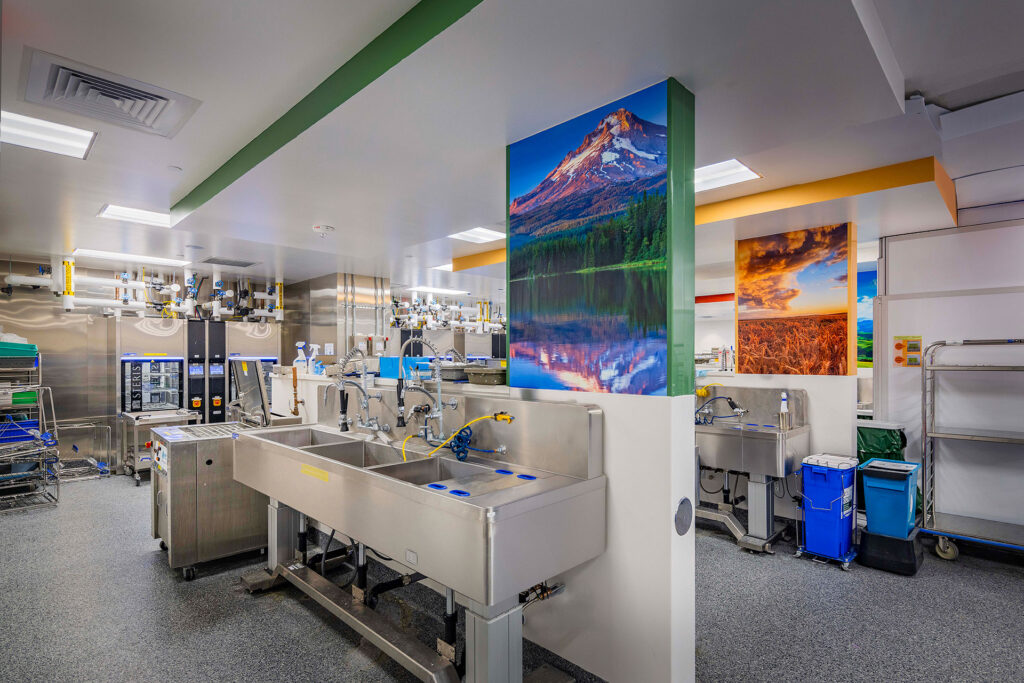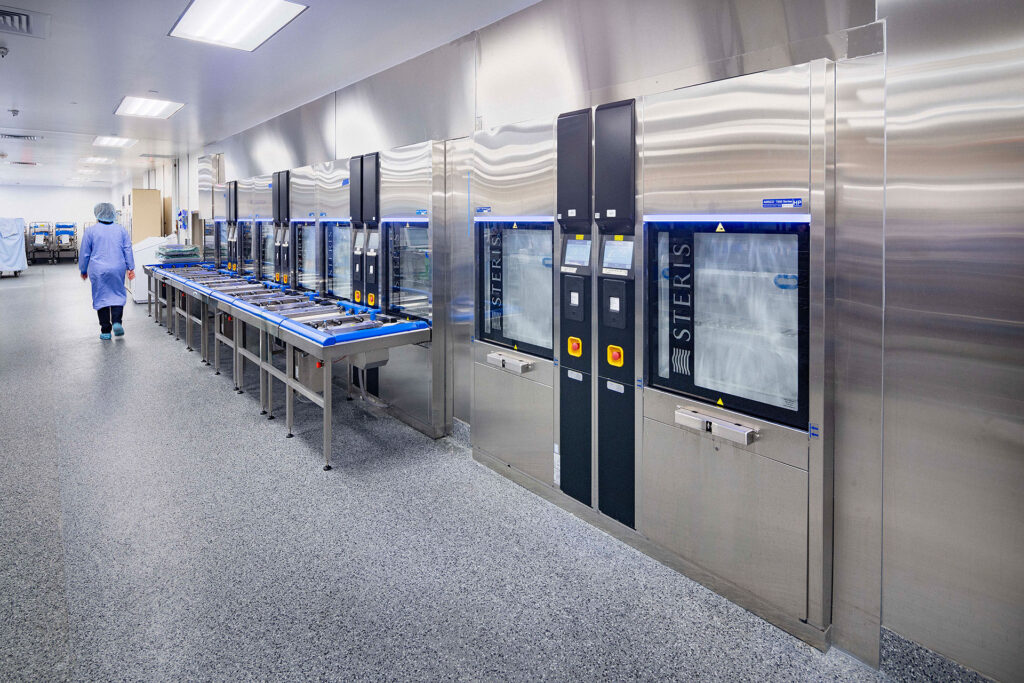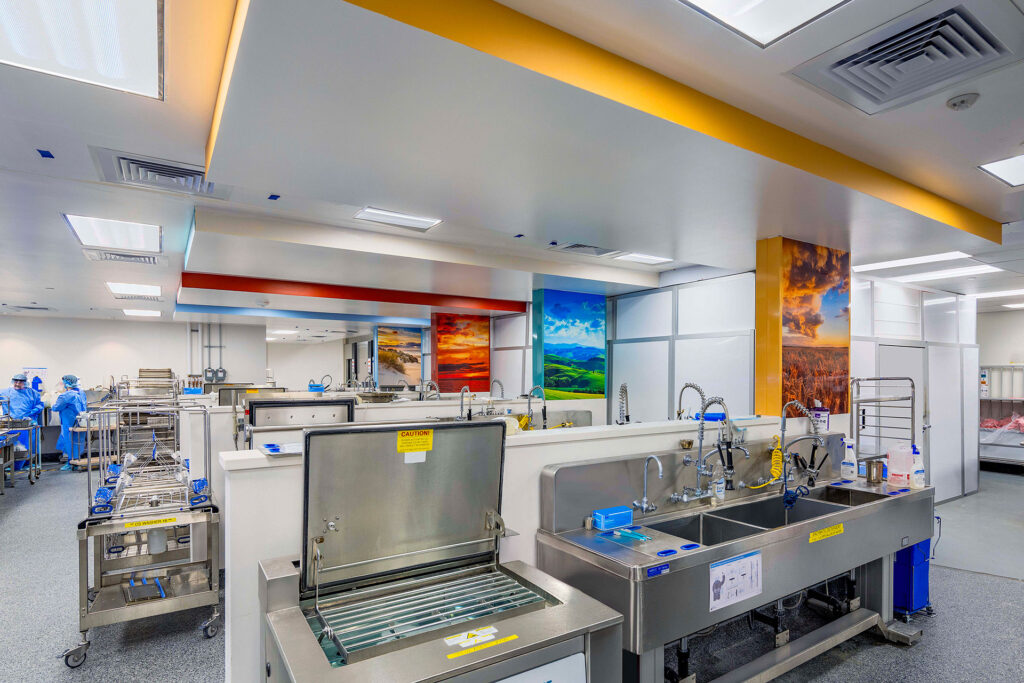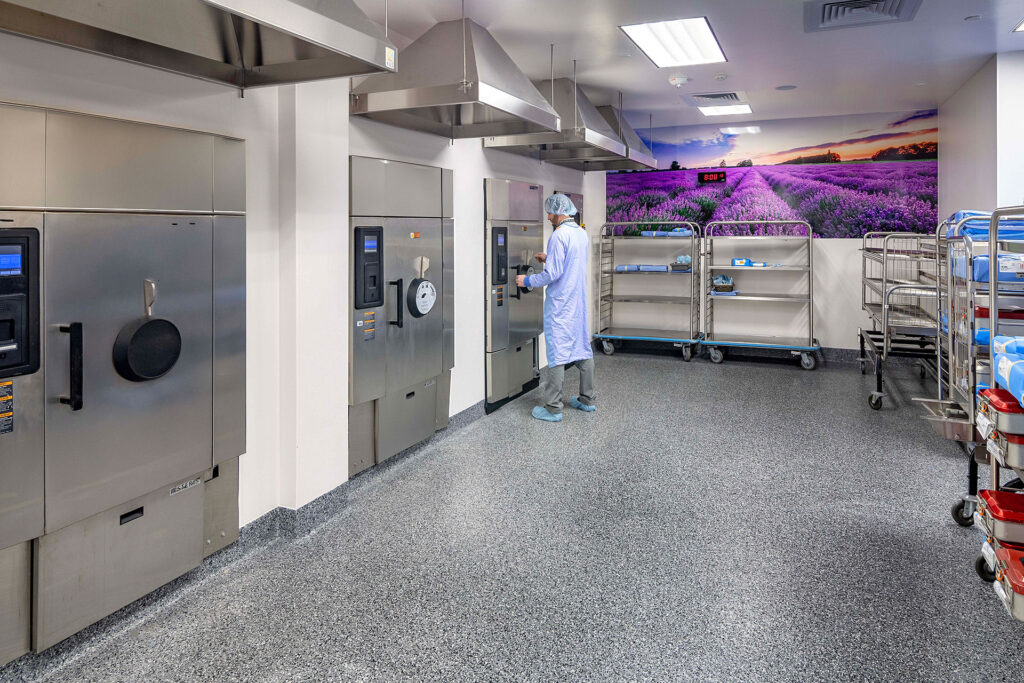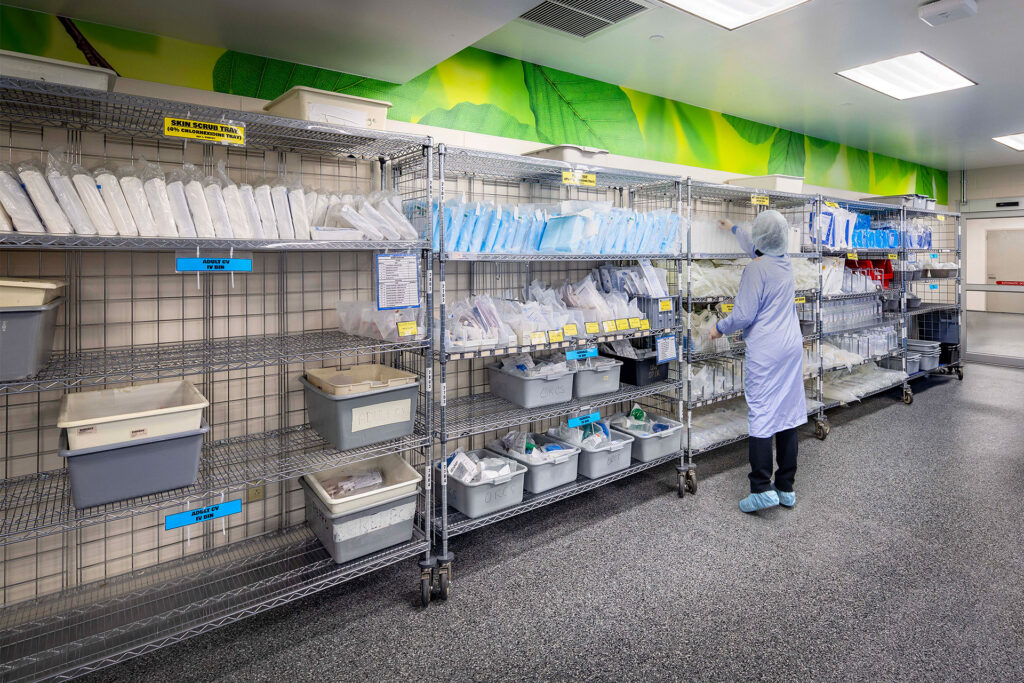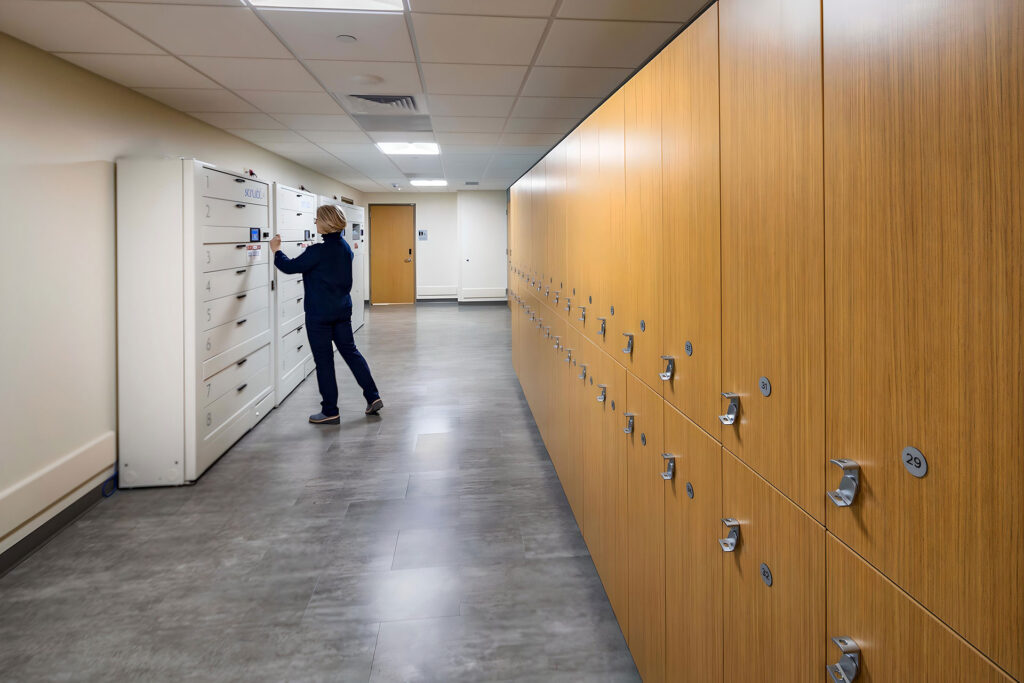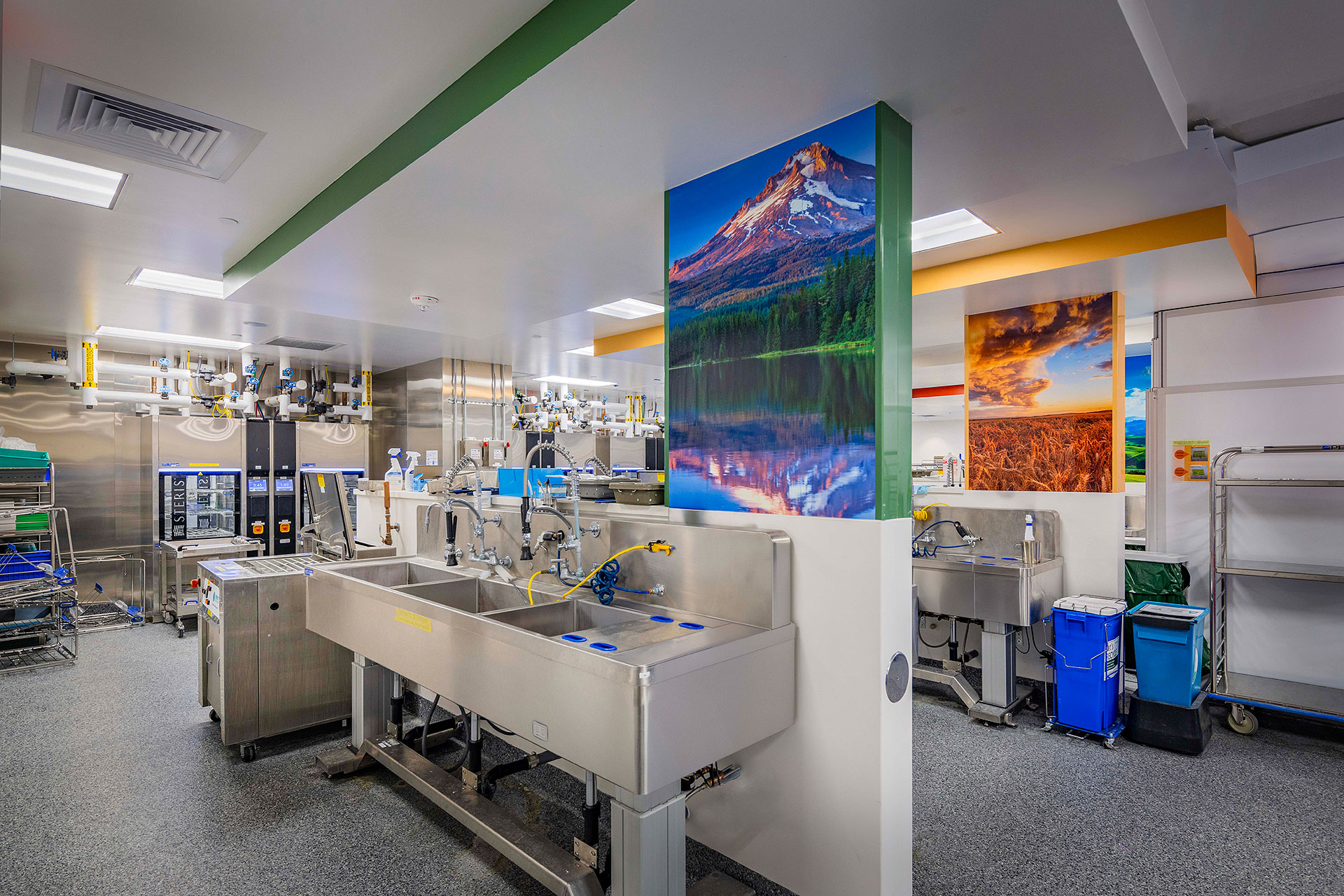The renovation and expansion of the Sterile Processing Department at UW Health University Hospital is an important piece of the hospital’s first floor master plan project. The renovation project will improve workflows, safety, and quality for the department and enable the subsequent masterplan projects. Lean design tools and concepts helped to outline design challenges and determine opportunities for improvement.
The expansion was needed to support more processing equipment and increase throughput to accommodate growing surgery volumes. Due to existing conditions, the department layout also had code compliance issues and inefficient workflows. The project goals were to incorporate the best practices for infection control and safety, improve staff efficiency and increase throughput and products for the department.
Our team leveraged Lean design tools and concepts to involve stakeholders in the design process and utilize their ideas. The project began with a Gemba walk to observe the current workflows and challenges. Next, we mapped the current and ideal future state value streams to identify opportunities to improve workflows.
The design meetings were structured as Kaizen (continuous improvement) events that gathered all stakeholders and consultants to make decisions collaboratively. Staff then used these improvement ideas when they participated in a puzzle play exercise to create the ideal layout. The design team and stakeholders tested layout options to determine which one met the project’s goals best. The selected layout was developed in detail.
Design Innovation
The design and construction team used pull scheduling to identify challenges such as long lead times for equipment in the construction schedule. The team also collaboratively developed a phasing approach considering staff and materials flows that allow the department to remain operational throughout construction.
